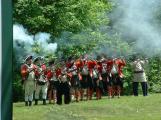1
Painting by Barbara Clark of the Loyalist refugee arrival at Fort Cumberland, Nova Scotia,July 178315 July 1783
Fort Cumberland, near Amherst, Nova Scotia.
 Credits:
Credits:Barbara Clark, Wallace River, Cumberland County, Nova Scotia
2
21st Century Wallace,Cumberland County, Nova Scotia, formerly called Remsheg25 August 2012
Wallace, formerly called Remsheg
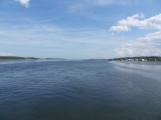 Credits:
Credits:Zella Perry
3
The story of when, where and how the Loyalists camed to Remsheg.18th Century,Circa 1783
Remsheg land grant includes 20,000 acres of land fronting on the Northumberland Strait, in Northern Nova Scotia
In the fall of 1782 a preliminary agreement to end the hostilities of the American Revolution was signed between Great Britain, France and the new independent American colonies.
The agreement, referred to as "the Treaty of Paris" was officially signed in September, 1783, and it laid out the principles for peace.
Although American negotiator Benjamin Franklin demanded the cessation of Canada to an independent America, he knew that the British Government of Prime Minister Lord Shelburne was opposed to the American independence and would be unprepared to accept that offer. The months of hard bargaining resulted in a preliminary agreement with the articles for peace.
Primary to the agreement was, the British negotiators agreed to the evacuation of New York City, which was the main British stronghold in the American Colonies.
The preliminary articles of agreement were signed on November 30, 1782. Soon after the preliminary agreement was signed the British patriots urgently became aware of their situation and their potential treatment in the future. British supporters began to hold meetings and signed petitions for land grants in areas still under British rule.
These British supporters, who for many years were the heart of Colonial America, thought they were now being forced to leave for their own safety. Some other reasons for leaving ranged from loyalty to Britain and a rejection of the republican ideals of the American Revolution, to simply the offer of free land in British North America. Many were prominent Americans whose ancestors had originally settled there in the early 17th century. Many had already lost their property, confiscated by the revolutionary Sons of Freedom.
They felt forced to move north, into present day Canada and to other areas of British North America and the British Colonies in the Caribbean for the safety of living under British Rule.
The name, "United Empire Loyalist", is an honorary title, given to those people who were refugees of the American Revolution. Many stories are recorded about these Loyalist people
and their circumstances.
The future "Westchester Refugees" were from just north of New York City, in the County of Westchester. Some of the Westchester Loyalists were granted properties in Remsheg, on a 20,300 acre property of Crown land. The proposed parcel of land was situated on the Northumberland Strait, about 50 miles from Fort Cumberland.
Between 80,000 and 100,000 loyalists migrated from the American Colonies. Approximately 35,000 came to the Maritimes. The Remsheg Grant was for 109 farm lots of about 200 acres each and 239, 3 acre town lots in Fanningboro a site for the proposed community given to families coming to Remsheg.
Two ships carrying over 450 refugees destined for Cumberland County, left New York City during the first week of June 1783. They travelled up the Bay of Fundy, with one stop in the Annapolis Valley; they landed on July 15 at Fort Cumberland, near present day Amherst.
Over the past two hundred years, these Loyalist's descendants have made remarkable contributions to Nova Scotia's government, education, agriculture, business and religion. Many people in Cumberland County can trace their ancestry to the Loyalist settlers.
Credits:David Dewar, Curator
4
Mi'kmaq village. Painting by Barbara Clark showing daily life at Remsheg before the Europeans.15th Century, Circa 1490
Remsheg Harbour now Wallace Harbour
 Credits:
Credits:Barbara Clark, Artist and Historian
David Dewar
5
The name Remsheg, a Mi'kmaq name for place between.Before the French settlers arrived in this area, circa1700, Nova Scotia was inhabitated by the Mi'kmaq people.These native people were nomadic and named this place Remheg. Though there was a more permenent settlement after the Acadians expanded their families into the area, the Mi'kmaq people used Remsheg as seasonal site for fishing, hunting and gathering shellfish. Research suggests the name Remsheg stood for "a place between". A site between the larger Mi'kmaq villages at Pugwash, Malagash and Tatamagouche.
6
Map of Acadian homesites in Cumberland County previous to Expulsion 1755. Drawn by Captain Lewis18th Century, Circa 1755
Northern Nova Scotia. Pictou to Amherst
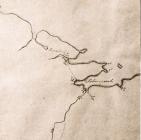 Credits:
Credits:David Dewar
7
Monument on site of Fort Lawrence. British Fort before the local French Fort became Fort Cumberland20th Century
Fort Lawrence, Cumberland County, Nova Scotia
 Credits:
Credits:David Dewar
8
Rich Remsheg soil with still visable remnants of a 17OOs Acadian Dyke to help improve drainage17th Century, 1690-1755
Remsheg land grant includes 20,000 acres of land fronting on the Northumberland Strait, in Northern Nova Scotia
 Credits:
Credits:Jim Reeves
9
Rich soil, worked by Acadians before 1755, provided great lands for farmers of the Remsheg Grant.18th Century, Circa 1783
Dewar River, Malagash
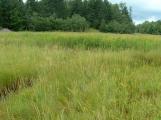 Credits:
Credits:Jim Reeves
10
The rich soil in the Bay area has created a great habitate for wild lifeJim Reeves
Wallace Bay, Cumberland Co. Nova Scotia
 Credits:
Credits:Jim Reeves
11
Before the Revolution many of the future loyalists lived with and were friends with future Patriots18th Century, Circa 1770
Passaic, New Jersey
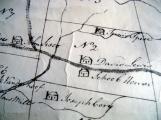 Credits:
Credits:David Dewar
12
A copy of a land map 1766 in the Horseneck, West New Jersey, area. Shows homes of several Loyalists18th Century, Circa 1766
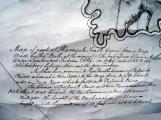 Credits:
Credits:Vivian Godfrey
13
The famous Boston Tea Party, an 1773 protest by colonists against new government imposed tax rules18th Century, Circa 1773
Boston, Massachusetts
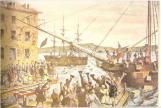 Credits:
Credits:David Dewar
